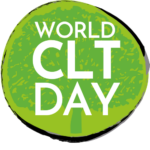Resources for Meaningful Youth Engagement in CLTs
By Richard Kruger Delgado
What does it truly mean to engage young people meaningfully in an organization? For organizations like CLTs, it requires shifting the perspective of youth from merely a population to be served to recognizing them as full members of the community who can participate in decision-making, governance, and program design. Given the holistic, place-based, community focus of CLTs, this should not be too hard of a challenge. But then what? What strategies and approaches have proven successful for organizations engaging young people?
As part of the lead-up to our “Stewarding the Future: Youth Power and Leadership in Community Land Trust Practice,” and serving in our role as library and resource center for the CLT movement, we are sharing resources about youth engagement that can serve as a starting point for practitioners and organizations looking to engage the youth members of their communities. We hope that these resources can provide a foundation for your own youth engagement practice!

Best Practices for Increasing Meaningful Youth Participation in Collaborative Team Planning
This report, from the Research and Training Center on Family Support and Children’s Mental Health at Portland State University, features a collection of best practices for engaging youth collaboratively in creating programs or plans that serve young people themselves. Topic areas covered in the report include how to promote youth participation at the organizational level, as well as a strategies for working with you before, during, and after their inclusion into collaborative planning.

“Youth Engagement in Policy, Research, and Practice: Community Voice and Power Sharing Guidebook” Urban Institute
This toolkit created by the Urban Institute is meant for policymakers, service providers, researchers, and technical assistance providers who want to meaningfully engage young people. The toolkit provides methods for engagement, describes the benefits of engaging young people, and provides tools for undertaking that engagement. The toolkit provides a project evaluation worksheet to help individuals and organizations asses if youth engagement is a right fit.

“Strengthening Communities Through Youth Participation: Lessons Learned from the ACT for Youth Initiative”
Assets Coming Together (ACT) for Youth is a youth development initiative created by the New York State Dept. of Health. This initiative was designed on the principle of positive youth development. Positive youth development aims to change policies and resources and community culture to provide youth with opportunities to meaningfuly engage in their own development. This research report from the Center for Nonprofits at the University of Wisconsin-Madison explores community-level outcomes of youth engagement through ACT for Youth, exploring how communities addressed the challenges of engaging youth in community initiatives as well as identifying the benefits that emerged from that engagement. The report provides case examples and recommends strategies for engaging young people.
One Youth – Youth Centered Design (YCD) Toolkit
This online toolkit is a part of UNICEF Canada’s One Youth project, which aims to create solutions with children and young people instead of for them. Youth Centered Design is an approach for designing programs and services that put youth first and that includes young people as experts in their own experience. The toolkit features six chapters covering elements of YCD and includes downloadable and printable materials to use in collaborative workshops with young people.

Engaging Youth in Community Decision Making
This report and toolkit from the Center for Study of Social Policy explores strategies and principles for engaging youth in decision-making for community well-being. The report provides a definition of youth engagement, provides examples of results from communities that engage youth in decision-making, shows how meaningful engagement can transform organizational culture, and provides strategies and tools for engaging youth in changing communities.

